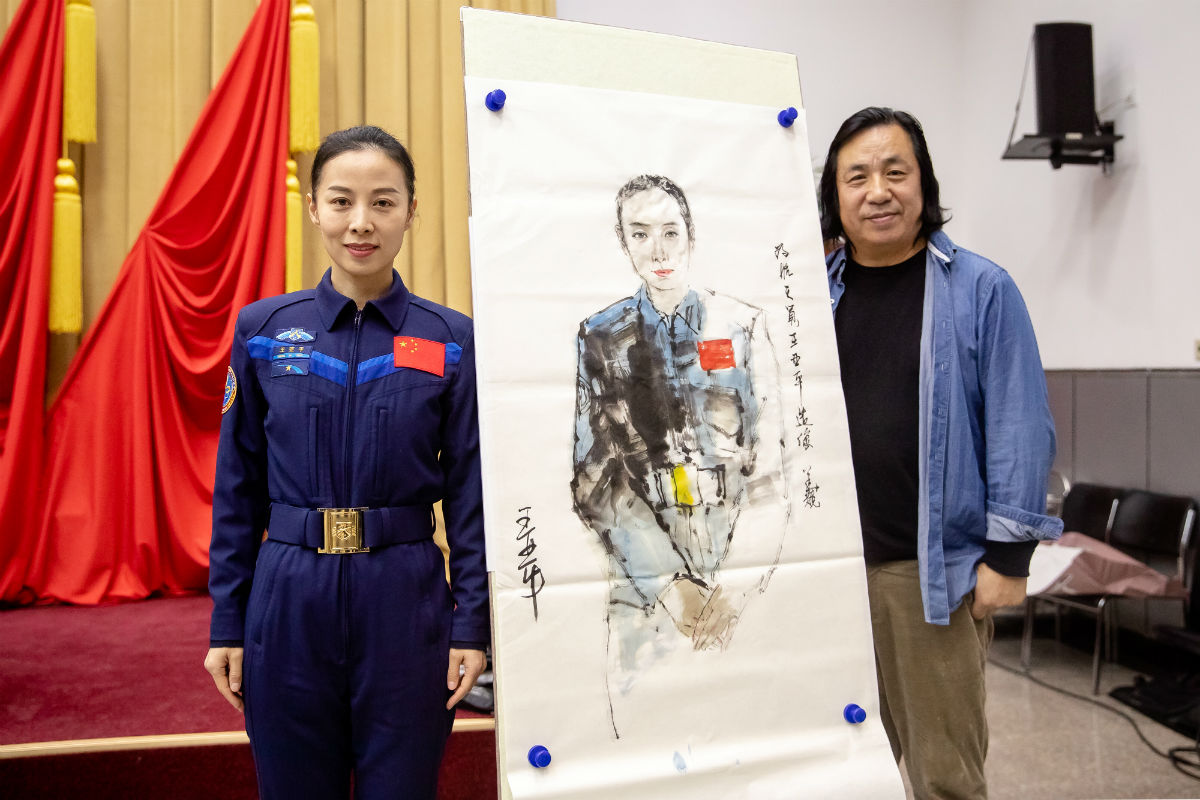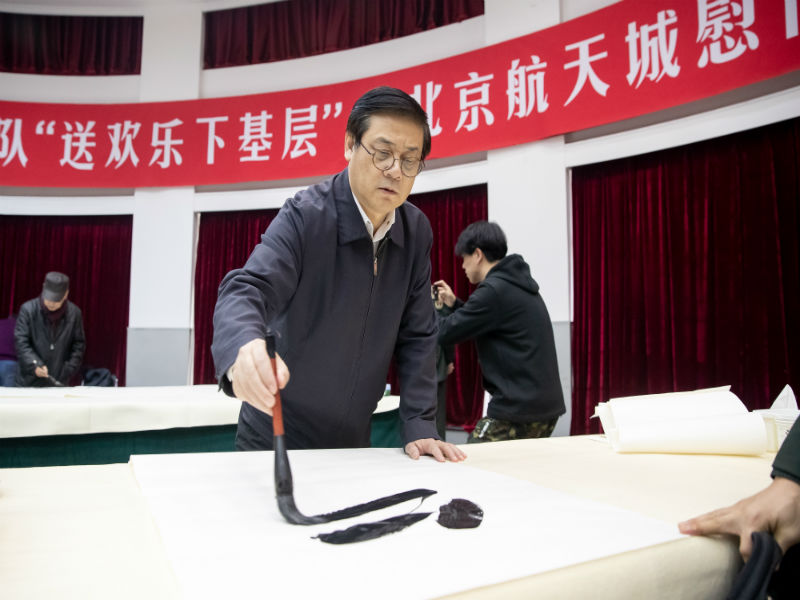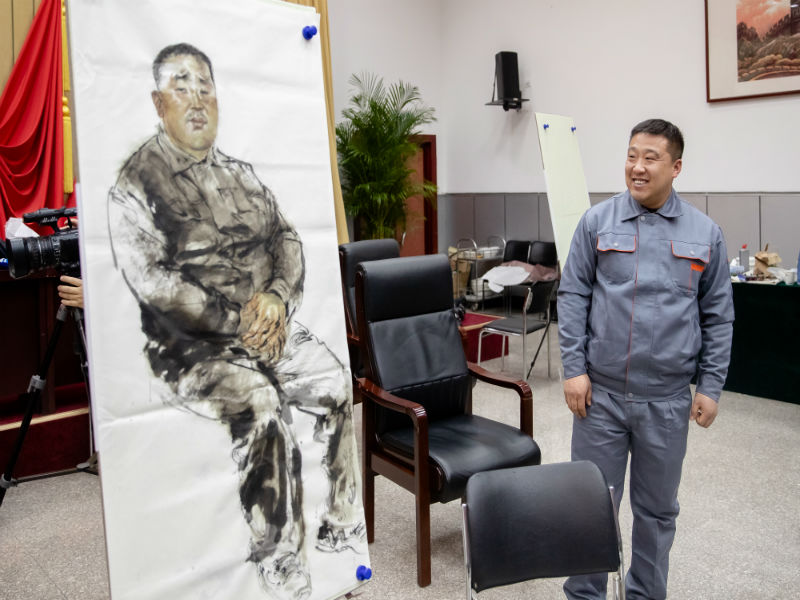Starry Skies

“I look quite resolute and firm in this painting,” Chen Dong remarked, pointing at a portrait of him that Professor Sun Hao of China’s National Defense University of the People’s Liberation Army created. “It looks like I am ready to get down to business.” Chen, a 41-year-old astronaut, successfully participated in the Shenzhou-11 manned mission in 2016. “I was quite excited for this event because it was my first chance to work as a model,” grinned Chen. Astronauts and other space workers don’t usually pose on site for artists. The unusual scene happened during the Spring Festival visit of China Artists Association’s volunteers to Beijing Space City located in the northwestern suburb of China’s capital city. The visit was part of the “Going Grassroots and Delivering Joy” campaign, a key cultural project of the China Federation of Literary and Art Circles.
During the campaign, renowned artists volunteered to form groups to provide the general public with “artistic services.” China’s aerospace industry has developed at breakneck speed in recent years. From China’s manned spaceflight program Shenzhou to the country’s lunar mission Chang’e, a series of key space projects have been successfully completed. On January 3, 2019, China’s Chang’e-4 probe touched down on the far side of the moon, stirring up a huge sensation both at home and abroad. Many flight control tasks for the Chang’e-4 mission were performed at Beijing Space City. To salute to aerospace workers, a volunteer group of painters and calligraphers from China Artists Association visited Beijing Space City to pay respect to space heroes with their artistic works.

Led by Xu Li, secretary of the Party Committee and vice president of the Standing Committee of China Artists Association, the volunteer group created works for space workers. Artists produced Spring Festival couplets, various calligraphic works featuring the Chinese character for “happiness,” landscape paintings, and bird-and-flower paintings. The painters also produced portraits of astronauts Jing Haipeng, Wang Yaping and Chen Dong on site as well as those of three other space science and technology professionals. All of the three astronauts had successfully returned from manned space missions. Among them, Jing Haipeng has gone to space three times. As for the three space workers, Liu Yong and Li Haitao have made important contributions to China’s lunar exploration program, and Zhang Jinwei is an outstanding representative of Chinese aerospace support personnel. Through the brushes of the painters, the features and personalities of those space heroes were vividly captured.

Artists also toured the space city to visit scientific research venues and facilities. Contrasting its counterparts around the world which gained fame due to space programs such as Houston, Beijing Space City is not so much a “city,” but the location of China Astronaut Research and Training Center. It is China’s first and the world’s third space mission control center with high-level capabilities in measurement, flight control and orbit determination. Its tasks include the command, dispatch and flight control of China’s manned spaceflight missions, as well as the selection and training of astronauts. It has nurtured several world-renowned Chinese astronauts.
Through the visit, the artists gained a deeper understanding of the hardship of space work. “We felt quite honored and happy to visit Beijing Space City,” declared Xu Li. “We hope that the future will bring more chances for artists to visit satellite and rocket launch sites and workplaces of frontline aerospace professionals. We want to create more artistic works to honor China’s space heroes.”